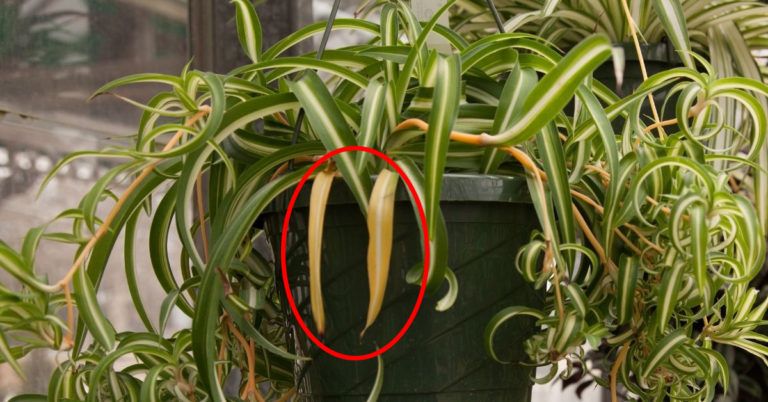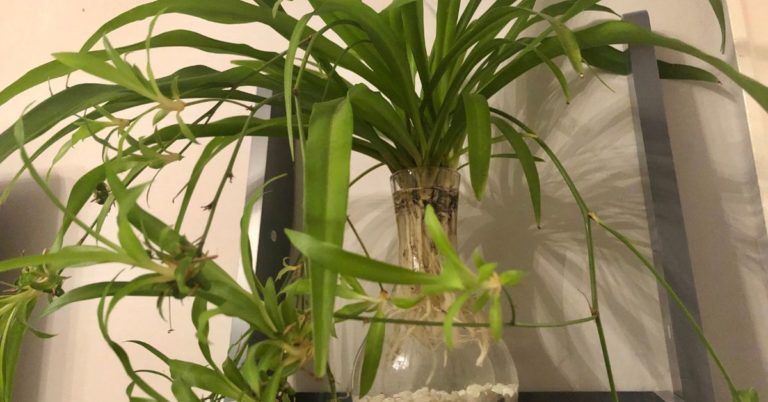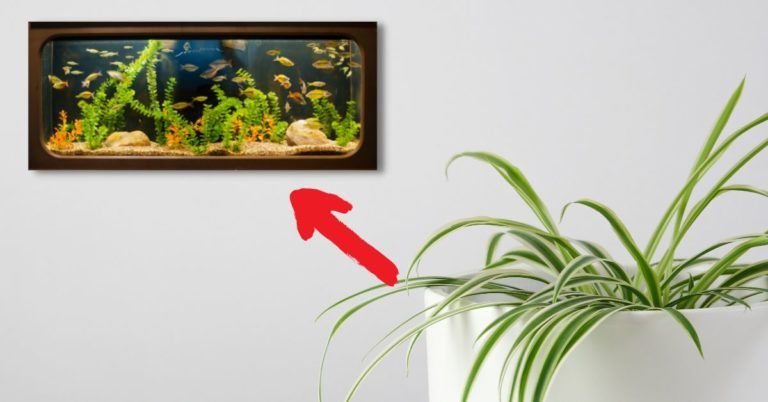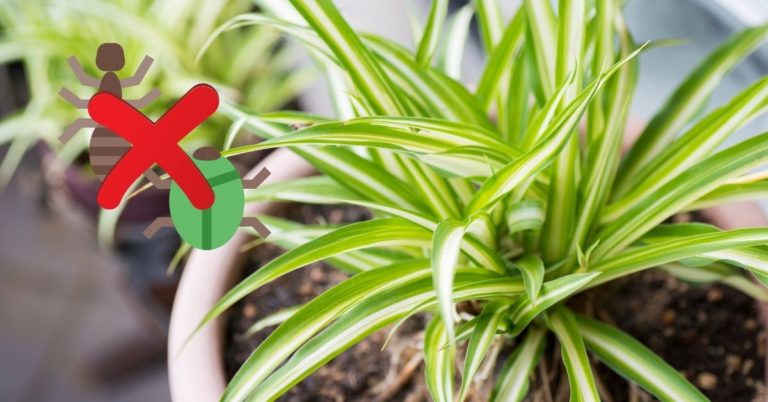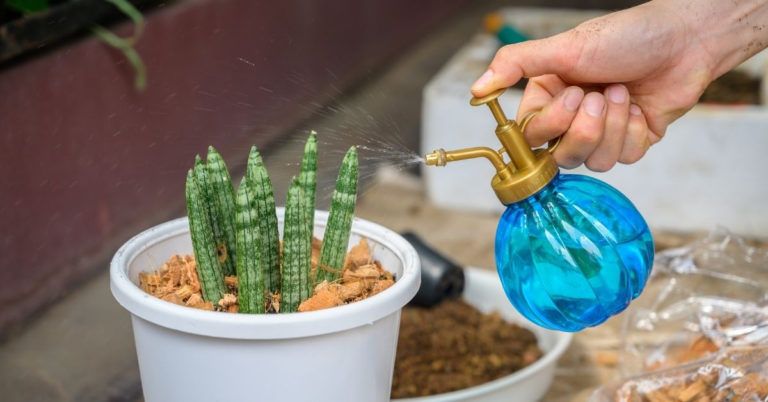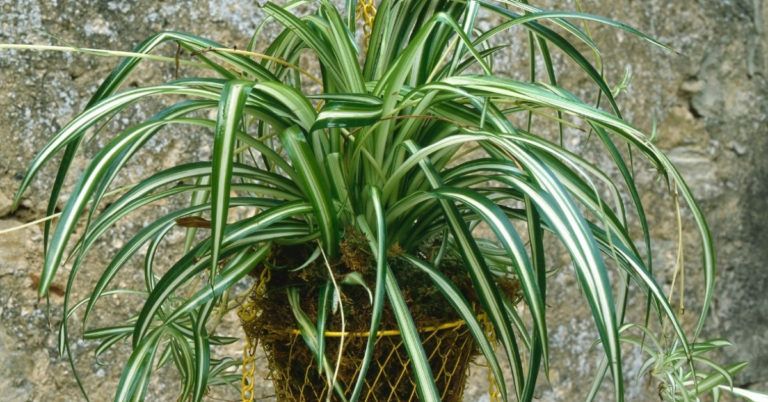Should I Cut Off Broken Spider Plant Leaves? (Answered)
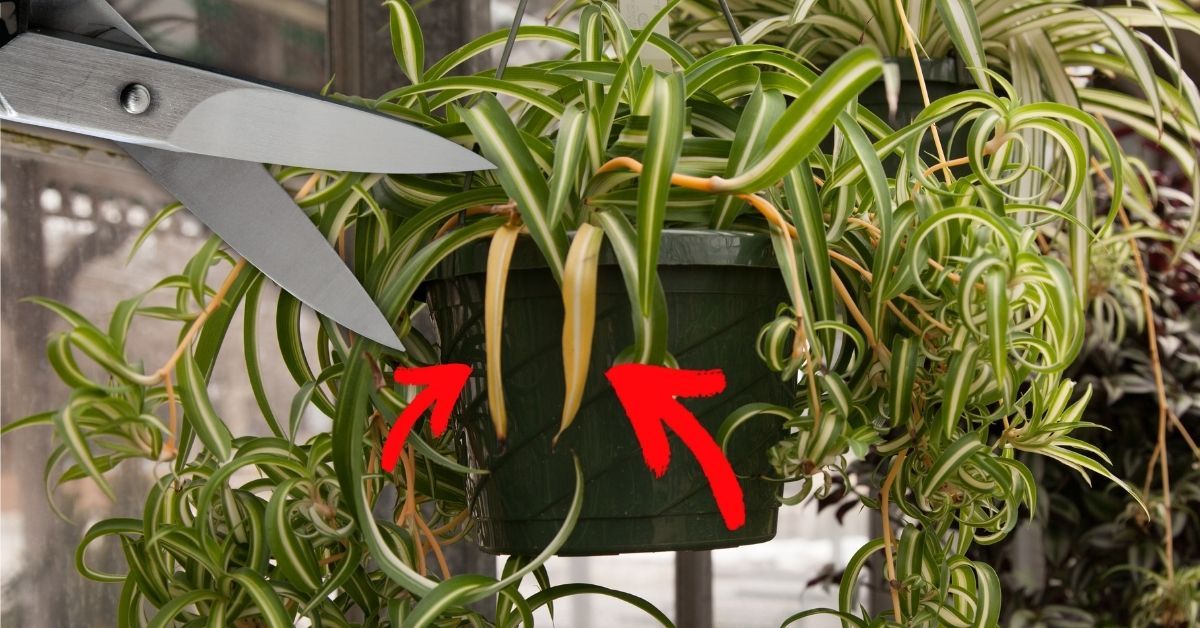
If you are like most people who grow spider plants, you probably want to know whether or not you should cut off the broken and dead leaves.
“Should I cut off broken spider plant leaves?” is a very common question that new spider plant owners ask.
In a nutshell, yes, you should cut off the broken and dead leaves of your spider plants. By removing damaged and dead leaves, your spider plant will obtain more nutrients and look better as a result.
In this article, I’m going to explain the truth behind the broken spider plant leaf. And why you need to know how to deal with it.
So if you want to save the lives of your spider plants, read on…
Should I cut broken spider plant leaves?

Yes, you should cut off broken spider plant leaves—the reason why is pretty simple.
Because if you don’t cut them off, the broken leaves will continue to take nutrition from the other leaves and may cause the whole plant to wilt and die.
There’s more to it than merely snipping off those dead leaves, despite how easy it may appear.
To keep your plant healthy, you’ll need to examine just how much of the leaf is dying and properly remove the damaged portions afterward.
A good rule of thumb is if half portion of the leaf has already been destroyed, you should remove it as soon as possible.
Cutting off broken and dying leaves is essential for three reasons:
- To allow nutrients to flow freely and foster new development.
- To stop disease or pests from spreading to other leaves.
- To boost your spider plant’s health and looks.
Dying leaves rob the plant of nutrients that your plant may better utilize elsewhere.
By removing these leaves, nutrients may flow to where they’re most needed: the healthy leaves that remain.
You don’t want your plant to waste energy and water on dead or diseased leaves.
Besides, dying or broken leaves will not have chlorophyll, which is essential to photosynthesis. This means that they won’t be able to create new energy for the plant.
As a result, the plant will start to wilt and die.
The same goes for bugs and diseases. Cutting off diseased or pest-damaged leaves as early as possible will help prevent the disease or pest from spreading to other areas of the plant.
Last but not least, spider plants with broken and dying leaves are unattractive.
They have an unattractive and sickly appearance. But by getting rid of them, you’ll be able to make your spider plant look healthier and more vibrant.
In some plants, keeping brown leaves on the plant has been shown to accelerate its death.
To sum up, dead and dying leaves rob your plant of the nutrients it needs to grow and thrive.
By cutting off all the broken leaves on your spider plant as soon as possible, you’ll be able to prevent your plant from wasting energy and resources on them.
Also read: Why is My Spider Plant Turning Yellow? (Causes and Fixes)
What do you do with broken spider plant leaves?
There’s nothing you can do with broken spider plant leaves except to cut them off.
The best thing you can do for your spider plant is to cut off the broken leaves as soon as possible.
The reason is that the longer you wait, the more your spider plant will suffer from nutrient deficiency.
To prevent this from happening, you’ll need to remove the broken and dying leaves.
Another tip to keep in mind is don’t cut off all the broken leaves at once. Instead, cut off a small portion of the leaves first and then gradually remove the rest.
We will talk about trimming dead spider plant leaves further down this post, so keep on reading.
Should I cut the brown tips off my spider plant?
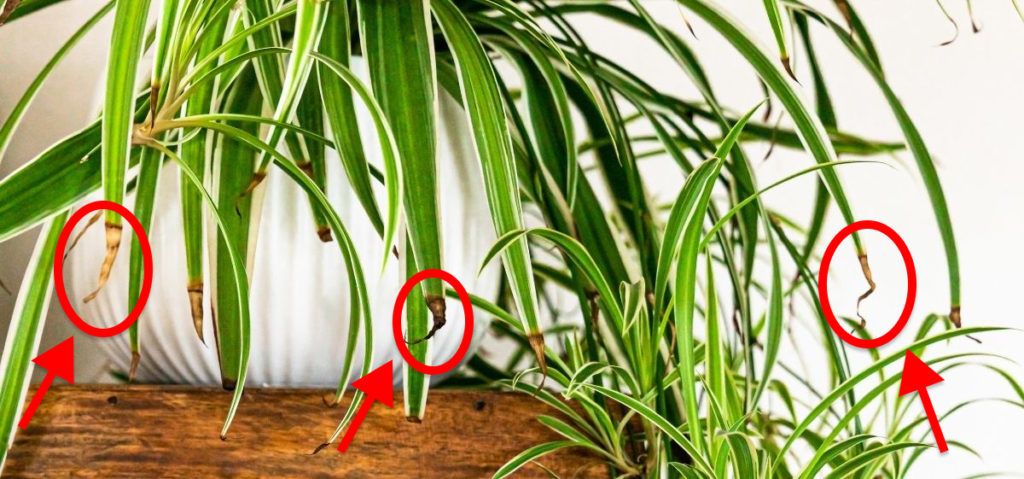
Yes, you should cut off the brown tips off my spider plant—the reason is pretty simple.
Because if you don’t cut them off, the brown tips will continue to suck up nutrients and water from other parts of the plant.
By removing those brown tips, you’ll be able to make your spider plant look healthier and more vibrant.
I kid you not – my friends have been asking me many questions about why my spider plants are so vivid and attractive.
I’m not going to lie to you; all I do is just cut off the brown tips off my spider plants.
I’ve been doing this for years, and I can tell you that it’s definitely worked.
This is an effortless and quick way to make your spider plants look healthier and more vibrant.
Further reading: Why is My Spider Plant Turning Brown? Find Out Why!
How do you trim dead spider plant leaves?
We know now that trimming dead spider plant leaves is excellent for your spider plants.
So here is how you trim dead spider plant leaves:
First of all, you will need a pair of very sharp scissors or shears.
A dull pair of scissors can damage your leaves, making them seem much worse than they were before you cut them. So make sure you get a good one first.
Next, start looking for any dead leaves that have turned yellow or brown.
To avoid attracting bugs and creating a breeding ground for mold, sweep up any fallen leaves immediately.
If bacteria or leaf spot disease is detected, use rubbing alcohol to clean the blades of your scissors between each cut.
Wet the blades before cutting to avoid damaging vital tissue while removing dead leaves due to aging, watering issues, or sunburn.
Remove any brown or yellow leaves from your spider plant by chopping them off near the stem or the soil.
Make sure you don’t pull on the leaves since this might cause harm to the plant’s healthy sections.
Finally, when dealing with your spider plants’ brown or yellow tips, you should remove just the damaged edge or patches.
When trimming, make sure not to cut more than 20% of your spider plant in one go.
You want to trim your spider plant in phases because cutting just so many leaves at once may shock and stress your plant.
By cutting in small chunks, your plant will be able to adjust itself to the changes and keep on growing.
Once you’ve trimmed your dead spider plant leaves, you can give your plant a little sprinkling and a nice drink if the soil is dry.
Your spider plant will be back to its former glory in no time!
The water will help the spider plant absorb all the nutrients that have been removed from the leaves.
Will broken spider plant leaves grow back?
No, broken spider plant leaves will never grow back and heal on their own. The reason why is pretty simple – they’re dead.
This is why you should remove the dead and dying leaves from your spider plants as soon as possible.
And you should not worry about cutting off broken and dead leaves from your spider plants.
If you remove the damaged leaves, your houseplant will produce new ones to replace them.
Why is my spider plant leaves breaking?
There are several reasons why you might see your spider plant leaves breaking.
Some of these reasons include:
- Overwatering – watering too much can cause spider plant leaves to break.
- Too much sun exposure – too much sun exposure can dry out your spider plant and make it prone to leaf burn and rot.
- Temperature fluctuations – if you live in a place with extreme temperatures, you may be subjecting your spider plant to sudden temperature drops and highs. This can lead to spider plant leaves breaking and cracking.
These are the top three most common reasons why your spider plant leaves might be breaking.
If you want to find out and learn more, you can read our post about why your spider plant is dying.
Important Takeaways
To sum it up, the best thing you can do for your spider plant is to cut off the broken leaves as soon as possible.
This way, you’ll be able to prevent your spider plant from wasting energy and resources on them.
Cutting off dead and broken leaves will also help your spider plant to grow healthier and more vibrant.
When cutting off these vexing leaves, remember to use a pair of razor-sharp scissors.
Now, I’d like to hear from you:
Do you have any tips on cutting a broken leaf off a spider plant?
Please let us know by leaving a comment below.
Until then, happy gardening!
